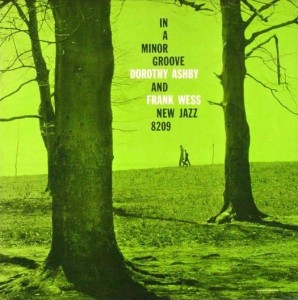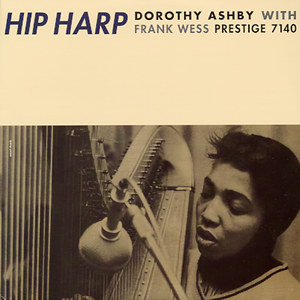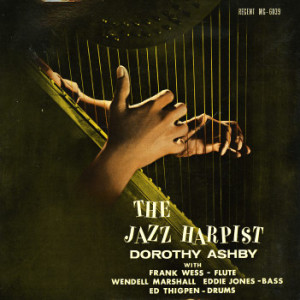Dorothy Ashby and Frank Wess – In a Minor Groove New Jazz NJLP 8209 (1959)
Jazz music tends to be played on a fairly well-defined set of instruments. The bagpipes, accordion, cimbalom, any sort of double-reed instrument… there are plenty of things that just don’t pop up that often, and when they do they are used sometimes only for a novelty effect. Harpist Dorothy Ashby and flautist Frank Wess bring together two such rarely played instruments for what turns out to be an impressive hard bop album, In a Minor Groove. The mood is that of a hip, bohemian club (sort of a whole album along the lines of Sun Ra‘s “Lullaby for Realville” or maybe some early Eric Dolphy recordings). The delicate timbres of the harp and flute contrast with the punchy qualities of the drums and acoustic bass, giving the music an inherent interest even when rooted in familiar hard bop structures. Yet the players don’t content themselves with merely offering some unusual instrumentation. The playing is superb. Ashby was widely regarded as the best harpist in jazz. Her and Wess play with assurance. Drummer Roy Haynes is particularly effective. He lays back and uses brushes a lot, with embellishments limited to just a slightly harder attack now and then. But his happy-sounding and very understated performances is perfect for the music. This is forward-looking bop, and about as good as “inside” music of the era got.



